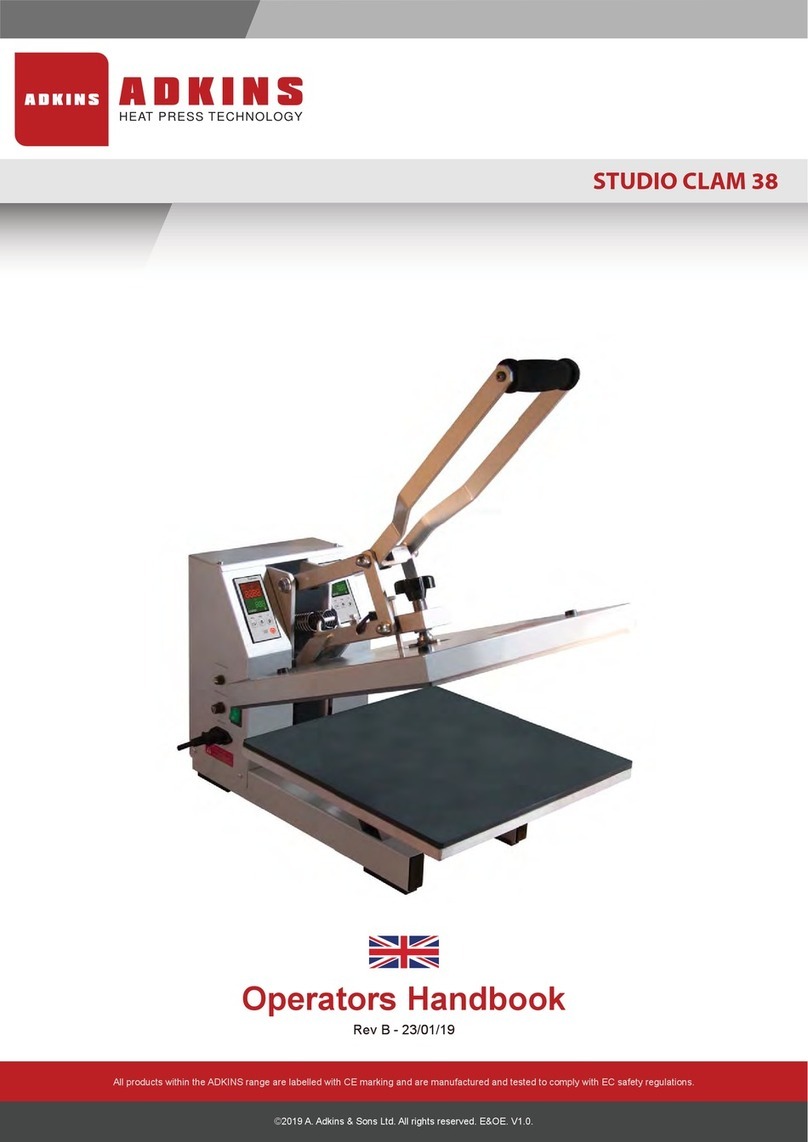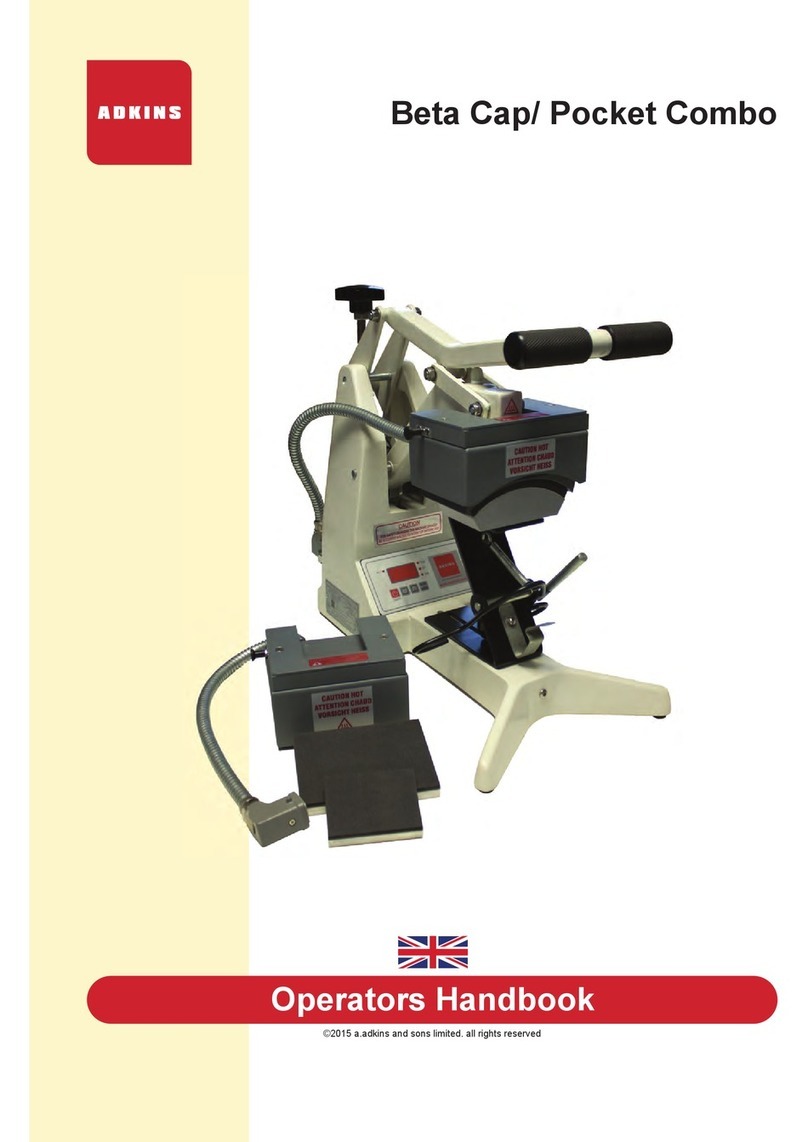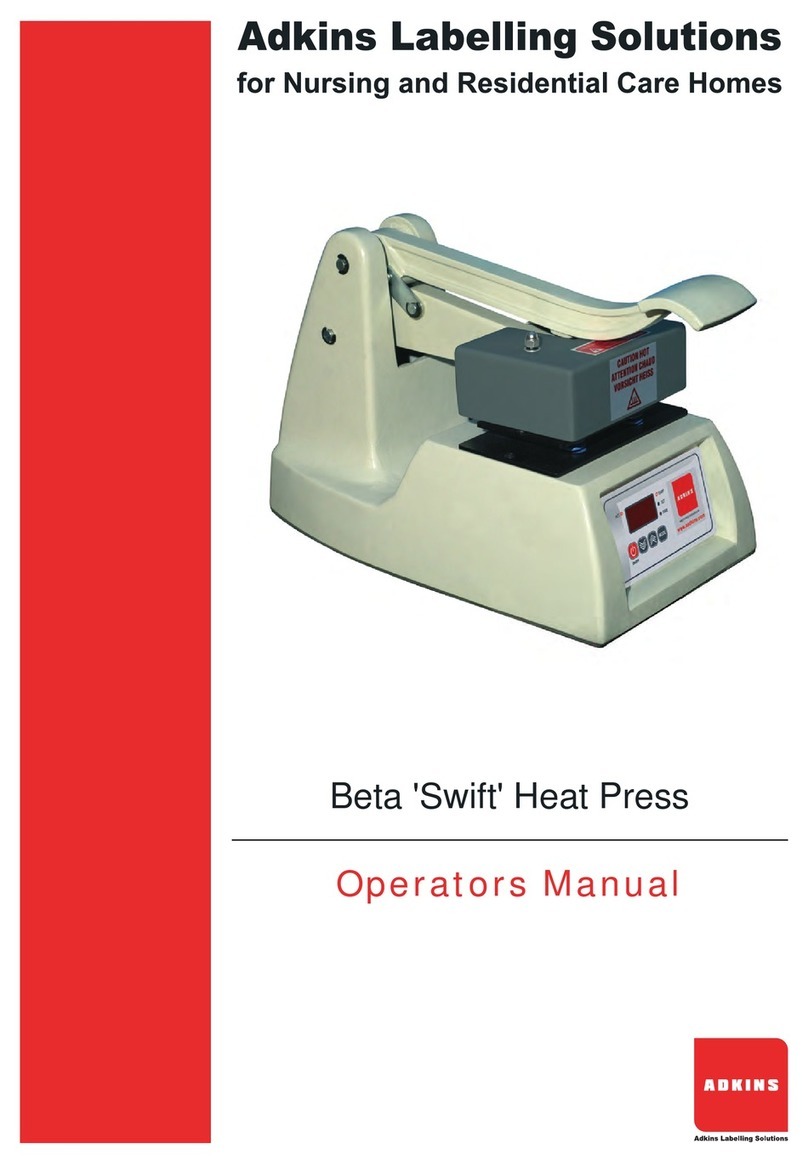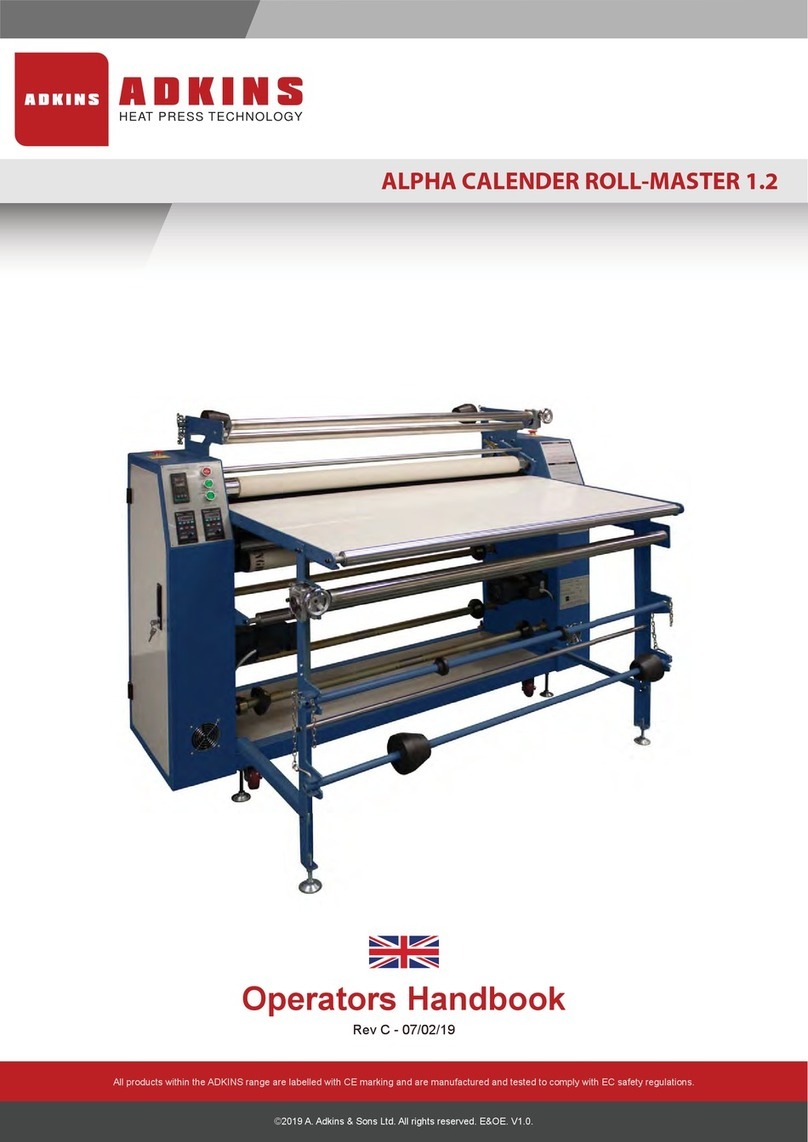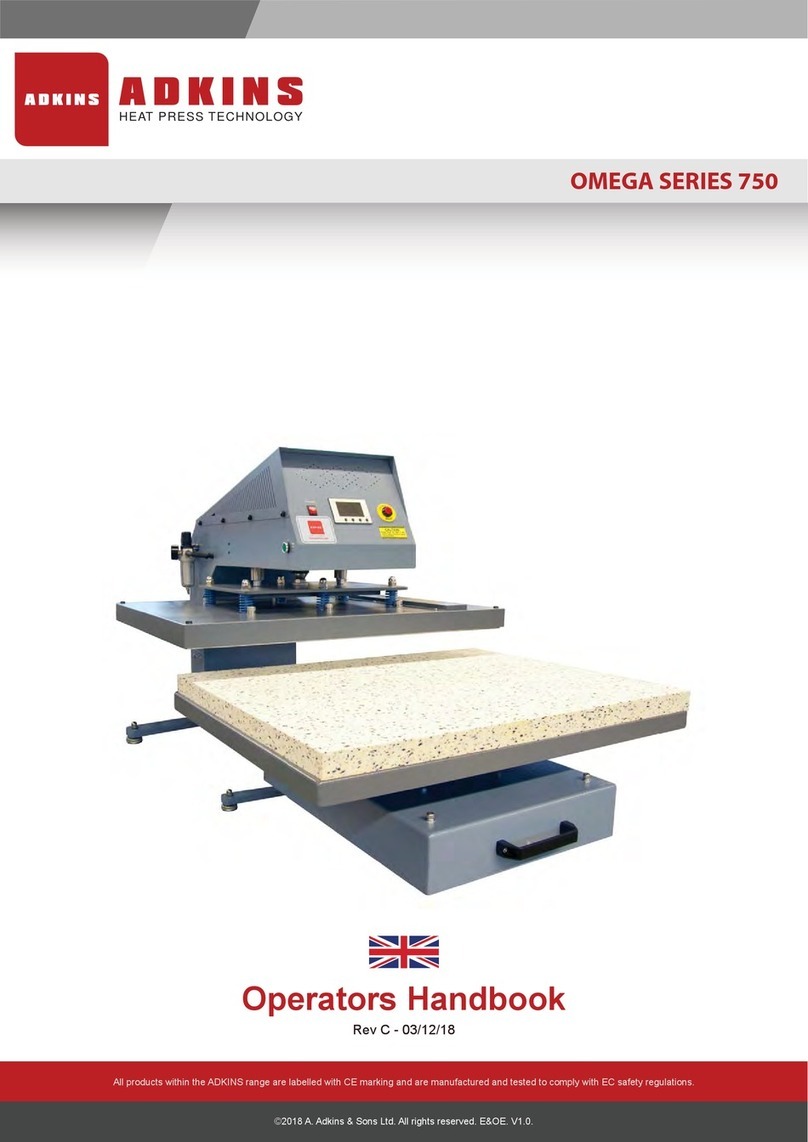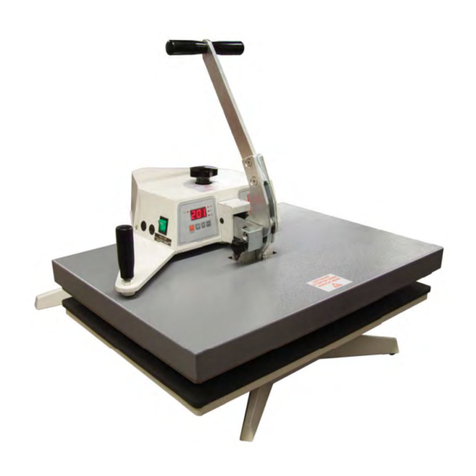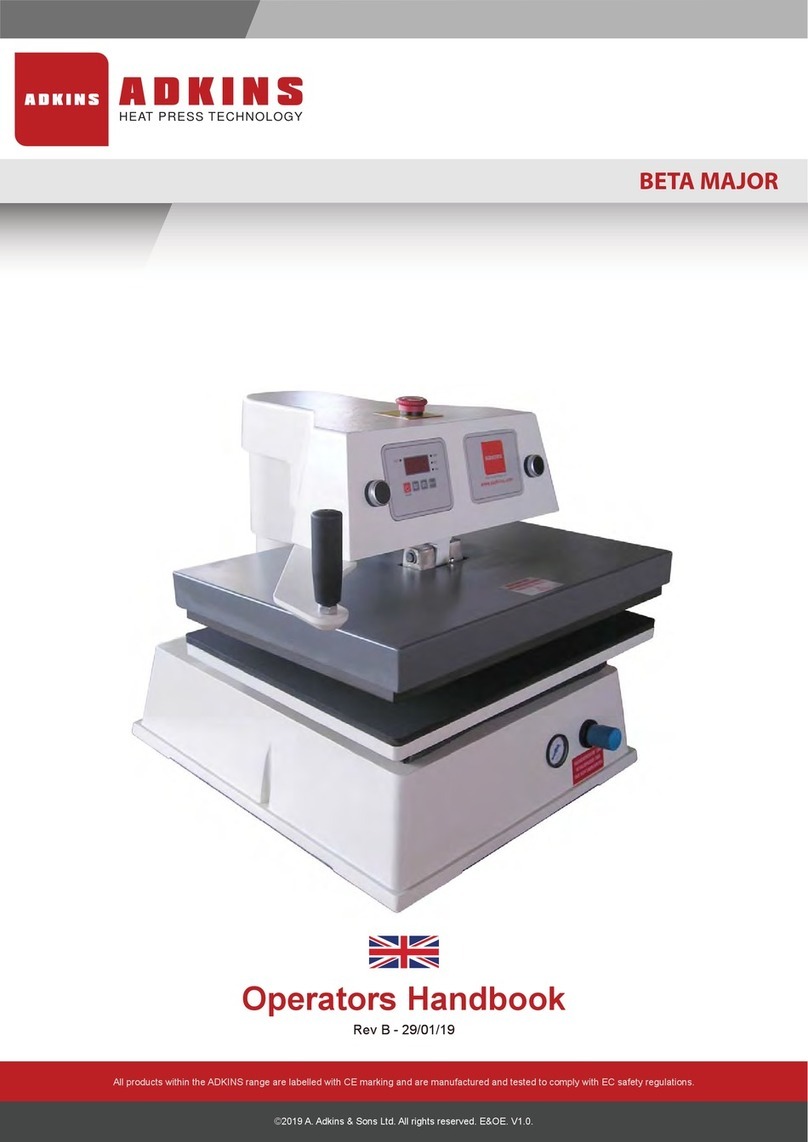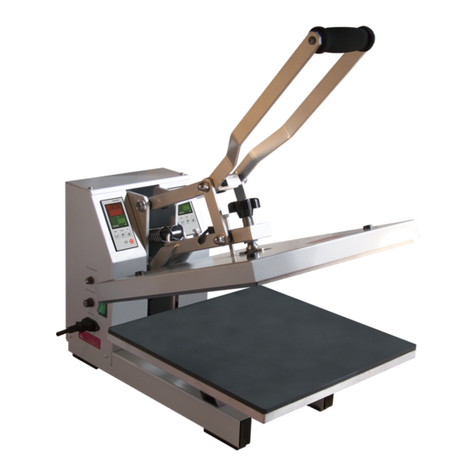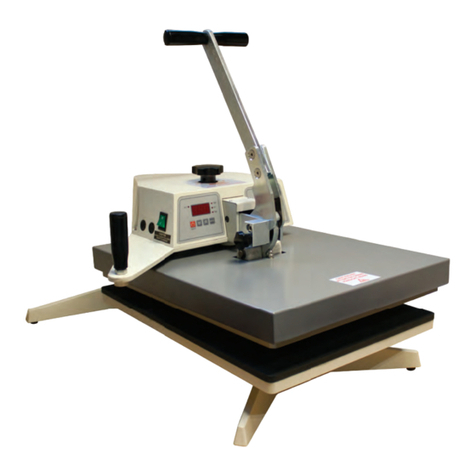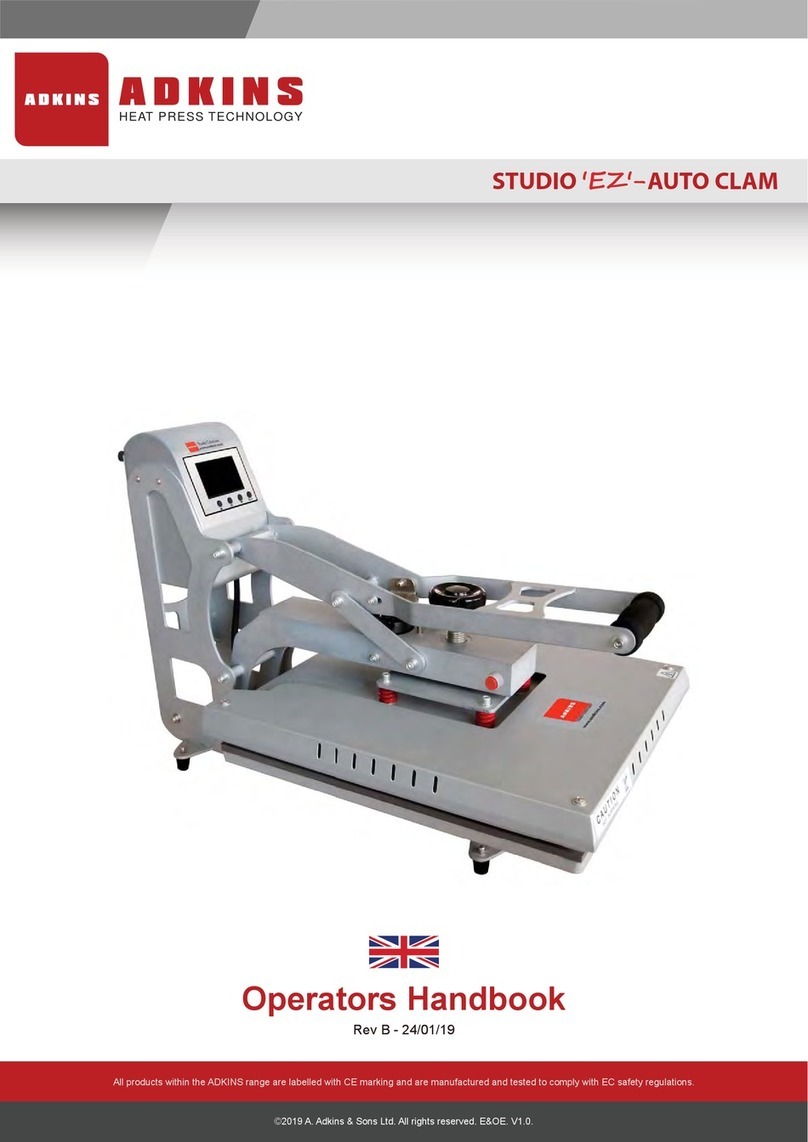Page 7
3. How to Operate the Studio
Versa Press
3.1 Starting with the Studio Versa Press
3.1.1 Plug into your supply outlet and switch supply on.
N.B. Please ensure the mains plug is easily accessible to the
operator so that in the event of a fault the machine can be
unplugged.
3.1.2 Turn on the Studio Versa Press; the on/off rocker switch is
on the back of the machine cover and illuminates when “on”.
Set the machine controls as necessary. See instructions for
adjusting the pressure 2.4, and the operation of the time
temperature unit 5.2.
3.2 Working with Heat Transfer Materials
First ascertain from the supplier of the garment/ cap/ plate/ mug that
they are suitable for transfer printing and obtain from them and from the
transfer supplier the correct heat and time dwell setting for the process.
Always check before use that the transfers are either. ‘Hot’ or ‘Cold’
peel. Approximate settings may be as follows:
3.2.1 (Standard) T-shirt, (optional) Cap, (optional) Plate
attachments
a) Adjust the pressure setting of the machine by rotating the
adjusting knob situated on the top of the machine (See
exploded diagram in this manual) clockwise for more
pressure, anticlockwise for less pressure. Place transfer and
substrate into machine, positioning it as required. Make any
final adjustments using the pressure setting.
b) From a cold start-up allow the press to heat up to the desired
temperature.
c) To achieve a good transfer result the transfer paper should be
placed in the desired position on the substrate, removing all
wrinkles. Set the pressure adjustment so that there is good
contact with the substrate.
d) When the temperature indicator on the controller reaches the
set value the machine is ready to print. When you are satisfied
that the transfer is in the correct position gently close the
press with the handle. Immediately press the timer button on
top of the control unit to start the pressing cycle.
N.B. The handle must be in the locked position ensuring that
the work is fully clamped.
